Creative subway tiles layouts for 2025 are moving beyond the traditional running bond pattern to include dynamic arrangements like herringbone, vertical stacks, and geometric combinations that transform ordinary walls into stunning focal points. These innovative patterns allow homeowners to personalize their spaces while maintaining the timeless appeal of classic subway tiles. Whether you're renovating a kitchen backsplash or redesigning a bathroom, the right layout can dramatically elevate your interior design.
Subway tiles have been a staple in American homes for over a century, but many homeowners find themselves stuck in a design rut, defaulting to the same horizontal brick pattern they've seen everywhere. The problem isn't the tile itself but rather the lack of creativity in how it's installed. This year brings fresh opportunities to break free from conventional installations and explore layouts that reflect your personal style while adding significant value to your home.
In this comprehensive guide, we'll explore the most exciting subway tile layout trends for 2025, complete with practical installation tips, design comparisons, and expert advice to help you choose the perfect pattern for your project. Whether you're a DIY enthusiast or working with a professional installer, you'll discover actionable insights to transform your space with confidence.
Why Subway Tile Layouts Matter in Modern Design
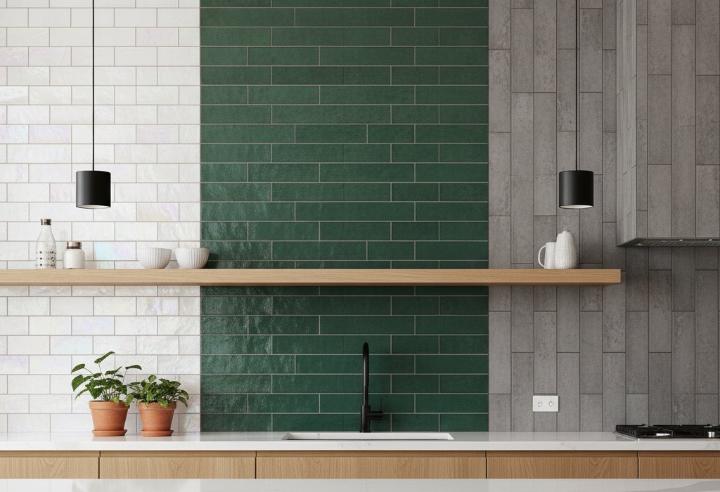
The layout you choose for your subway tiles can completely transform the perception of your space. A vertical stack pattern can make low ceilings appear taller, while a herringbone arrangement adds movement and sophistication to even the smallest powder room. Understanding these visual effects helps you make strategic design decisions that enhance your home's architecture.
Beyond aesthetics, your tile layout choice impacts installation time, material waste, and overall project costs. Complex patterns like herringbone or chevron require more precise cutting and planning, which translates to higher labor costs if you're hiring professionals. However, the investment often pays dividends in creating a truly unique space that stands out in today's competitive real estate market.
When selecting tiles for your project, consider exploring the extensive collection at Nova Tile and Stone, where you'll find various sizes and finishes perfect for any layout pattern. Beyond traditional tiles, browse the slab collection for coordinating countertop materials that complement your tile choices. The right tile quality combined with an innovative layout creates a stunning result that lasts for decades.
According to tile installation experts, the foundation of any successful tile project lies in proper surface preparation and pattern selection. Taking time to plan your layout before purchasing materials prevents costly mistakes and ensures you order the correct quantity of tiles for your chosen pattern.
Top Creative Subway Tile Layouts for 2025
Herringbone Pattern: The Sophisticated Classic
The herringbone pattern has surged in popularity over recent years and shows no signs of slowing down in 2025. This diagonal arrangement creates a distinctive V-shaped weaving pattern that adds depth and visual interest to any wall. Unlike traditional horizontal layouts, herringbone draws the eye across the entire surface, making it ideal for feature walls and backsplashes.
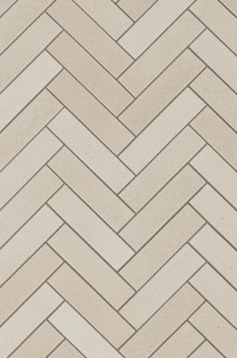
Installing herringbone requires tiles to be laid at 45-degree angles, alternating direction to create the signature zigzag effect. While more complex than standard patterns, the dramatic impact justifies the additional effort. Professional installers typically charge 20-30% more for herringbone layouts due to the increased precision required, but many homeowners find the investment worthwhile for the upscale appearance it delivers.
For best results with herringbone, use traditional 3x6 inch subway tiles or experiment with elongated formats like the Perfection 2.5x8 Matte Porcelain Subway Tile for a more contemporary twist.
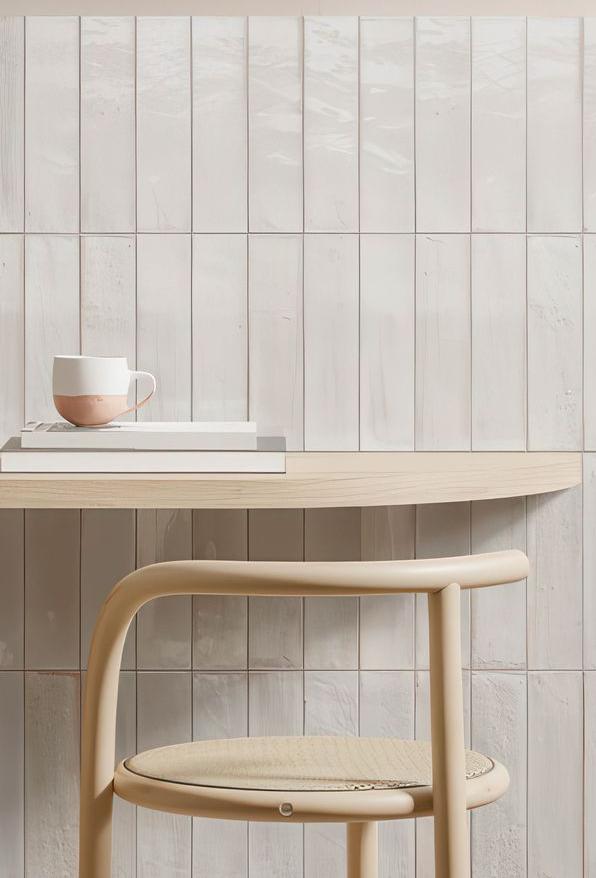
Vertical Stack: Modern Minimalism
The vertical stack pattern, also called straight stack or grid pattern, arranges tiles in perfectly aligned vertical and horizontal lines without any offset. This contemporary layout creates a clean, minimalist aesthetic that complements modern and industrial design styles beautifully. The precision of straight lines adds an architectural quality that feels intentional and sophisticated.
One major advantage of vertical stack is its ability to elongate walls visually. In bathrooms with standard 8-foot ceilings, running subway tiles vertically in a stack pattern can create the illusion of added height, making the room feel more spacious. This optical trick works particularly well in narrow shower enclosures and small powder rooms.
However, vertical stack requires impeccable installation skills. Unlike offset patterns that hide slight imperfections, the aligned grout lines in stack patterns make any deviation immediately noticeable. If you're attempting this as a DIY project, review detailed tutorials like this tile installation guide before beginning to understand the precision required for professional-looking results.
Chevron Pattern: Bold and Directional
Chevron takes the herringbone concept one step further by using tiles cut at precise angles to create perfect V-shaped points. Unlike herringbone where rectangular tiles meet at their long edges, chevron tiles are cut at 45-degree angles, allowing the ends to meet seamlessly in pointed peaks. This creates a more pronounced zigzag effect that makes a bold statement.
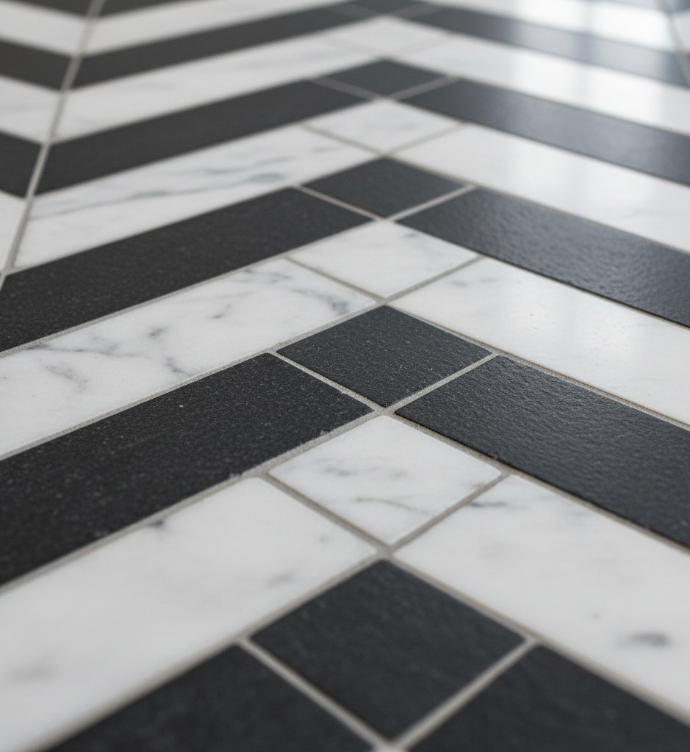
The chevron pattern works exceptionally well for creating accent walls or defining specific zones within open-concept spaces. Consider using it behind a range hood in the kitchen or as a dramatic shower wall treatment. The strong directional flow of chevron can make narrow hallways appear wider when laid horizontally, or add height to compact spaces when installed vertically.
When planning a chevron installation, factor in higher material costs due to the specialized cuts required. Many tile suppliers offer pre-cut chevron tiles, which simplifies installation but typically costs more per square foot. Browse Nova Tile and Stone's shop to explore size options specifically suited for geometric patterns like chevron.
Basket Weave: Textural Interest
The basket weave pattern alternates between horizontal and vertical pairs of tiles to create a woven appearance reminiscent of wicker baskets. This layout adds subtle texture without overwhelming the space, making it perfect for homeowners who want something different from standard patterns but aren't ready for the boldness of herringbone or chevron.
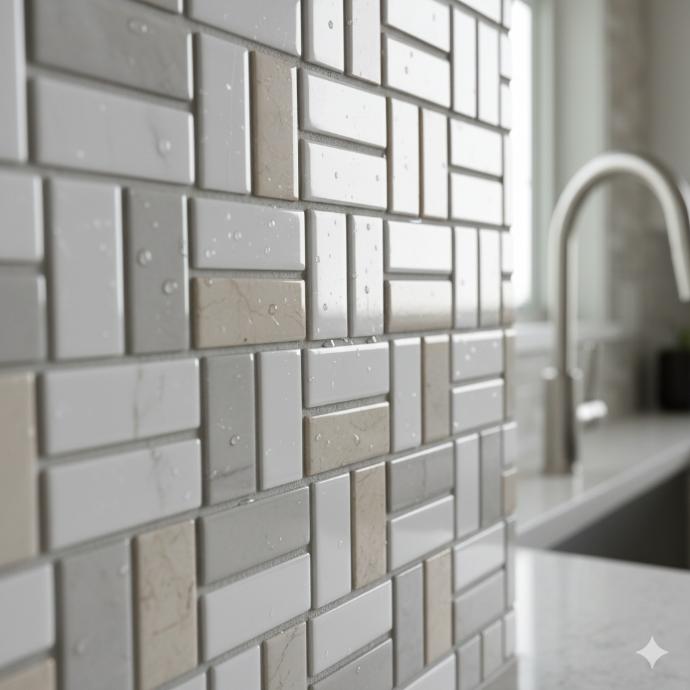
Creating basket weave requires careful planning to ensure the pattern remains consistent across the entire installation area. The layout typically uses square tiles or pairs of rectangular tiles arranged to form squares. For traditional subway tiles, you might pair two 3x6 inch tiles vertically, then two horizontally, alternating throughout the space.
Basket weave works beautifully in vintage-inspired bathrooms and traditional kitchens. The pattern pairs exceptionally well with classic fixtures and can soften ultra-modern spaces that feel too stark. This versatile layout bridges contemporary and traditional design aesthetics, making it an excellent choice for homeowners uncertain about committing to a single style direction.
Comparison of Popular Subway Tile Layouts
Layout Pattern | Difficulty Level | Cost Factor | Visual Impact | Best For |
Running Bond (Traditional) | Easy | Standard | Classic, Timeless | Beginners, Budget Projects |
Vertical Stack | Medium | Standard | Modern, Clean | Contemporary Spaces |
Herringbone | Hard | +20-30% | Sophisticated, Dynamic | Feature Walls, Upscale Projects |
Chevron | Hard | +30-40% | Bold, Directional | Statement Areas |
Basket Weave | Medium | +10-15% | Textured, Versatile | Traditional Kitchens, Vintage Baths |
This comparison helps you evaluate which pattern aligns with your budget, skill level, and design goals. Remember that difficulty level directly impacts installation time and labor costs if hiring professionals. Learn more about different types of tiles and their characteristics to make informed decisions for your project.
Color and Finish Combinations for Creative Layouts
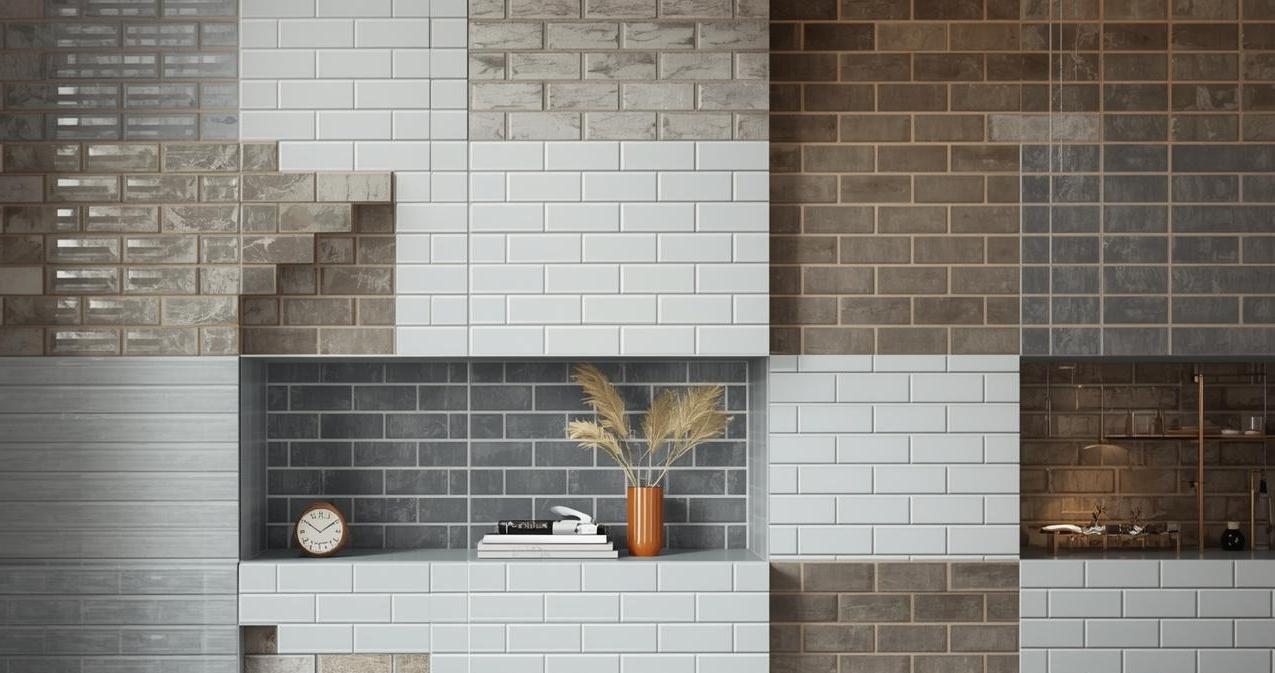
Playing with Contrast
One of the most exciting trends for 2025 involves combining different colored subway tiles within creative layouts. A herringbone pattern using alternating white and navy tiles creates striking visual movement, while a basket weave in two shades of gray adds subtle sophistication. The key is maintaining enough contrast that the pattern remains visible without creating visual chaos.
When selecting colors for patterned layouts, visit our shop to see how different hues work together in person. What appears harmonious in digital images might clash in natural lighting, so viewing physical samples prevents costly mistakes.
Consider using contrasting grout colors to emphasize your chosen pattern. White tiles with dark gray grout make herringbone or chevron patterns pop dramatically, creating an almost graphic quality. Conversely, matching grout color to tile creates a seamless, monochromatic effect that feels calm and cohesive.
Finish Variations for Added Depth
Mixing glossy and matte finishes within the same layout adds dimension without introducing multiple colors. Consider pairing the Linear 5x10 Glossy 3D Decorative Subway Tile with matte alternatives for striking visual contrast.
A vertical stack pattern alternating glossy and matte white tiles creates subtle texture that catches light differently throughout the day. This approach works particularly well in bathrooms where natural light changes the appearance of finishes.
Textured or beveled subway tiles add another layer of visual interest to any pattern. The shadows created by beveled edges enhance the dimensionality of herringbone and chevron patterns, making them appear even more complex.
Step-by-Step Guide: Planning Your Subway Tile Layout
Step 1: Measure and Calculate
Begin by accurately measuring your installation area in square feet. Measure the height and width of each wall section, then multiply to find the square footage. Add 10-15% extra for cutting waste and potential breakage. For complex patterns like herringbone or chevron, increase this to 20% to account for additional cuts and learning curves.
Step 2: Create a Layout Plan
Draw your wall to scale on graph paper or use digital planning tools. Mark the center point of your wall and plan your pattern to radiate outward from this center. This ensures balanced symmetry and prevents awkward partial tiles at visible edges. Consider how your chosen pattern will interact with outlets, windows, and other architectural features.
Step 3: Do a Dry Run
Before mixing any thinset mortar, lay out your tiles on the floor in your chosen pattern. This dry run helps you visualize the final result and identify potential issues before they become permanent problems. Take photos of your dry layout from various angles to confirm you're happy with the pattern before installation begins.
Step 4: Gather Professional-Grade Materials
Quality materials make the difference between a DIY project that lasts decades and one that requires repairs within years. Invest in proper thinset mortar suitable for your wall type, spacers appropriate for your grout line width, and professional-grade grout. Visit our showrooms to speak with experts who can recommend specific products for your project.
Step 5: Install with Precision
Start tiling from your marked center point, working in small sections to prevent mortar from drying before tiles are set. Use a level constantly to ensure straight lines, especially crucial for vertical stack and basket weave patterns where misalignment is immediately obvious. Allow proper curing time according to your mortar manufacturer's specifications before grouting.
Pros and Cons of Creative Subway Tile Patterns
Advantages of Innovative Layouts
Unique Personalization: Creative patterns allow you to express individual style and create spaces that don't look like every other home in your neighborhood. Your herringbone backsplash or vertical stack shower becomes a conversation piece that reflects your design sensibility.
Increased Home Value: Well-executed creative tile work appeals to buyers and can increase your home's resale value. Real estate agents consistently report that updated kitchens and bathrooms with distinctive design elements command higher prices and sell faster than homes with basic finishes.
Visual Problem Solving: Strategic pattern choices can correct architectural flaws. Vertical patterns raise low ceilings visually, horizontal patterns widen narrow spaces, and diagonal patterns like herringbone distract from uneven walls or awkward room proportions.
Timeless Appeal with Modern Twist: Subway tiles themselves are classic, so even adventurous patterns maintain an element of timelessness. You get the best of both worlds: contemporary design that won't feel dated in five years.
Potential Drawbacks to Consider
Higher Installation Costs: Complex patterns require more time and skill to install correctly, resulting in labor costs 20-40% higher than standard running bond patterns. If hiring professionals, obtain multiple quotes and view examples of their pattern work before committing.
Increased Material Waste: Intricate patterns generate more cutting waste, potentially requiring 15-20% extra materials compared to simple layouts. Budget accordingly to avoid mid-project shortages that can delay completion.
Greater Maintenance Visibility: Patterns with numerous grout lines require more cleaning effort to maintain their appearance. The many intersections in basket weave or the pronounced lines of vertical stack show dirt and discoloration more readily than traditional offset patterns.
Limited DIY Accessibility: While confident DIYers can tackle standard subway tile installation using guides like This Old House's tile replacement tutorial, complex patterns often exceed amateur skill levels, potentially necessitating professional help you hadn't budgeted for.
Practical Tips for Different Room Applications
Consider running your backsplash pattern all the way to the ceiling rather than stopping at the traditional 18-inch height. This floor-to-ceiling treatment makes a dramatic statement and is one of 2025's hottest kitchen trends. Learn about various types of tiles suitable for wet areas to ensure your kitchen selection withstands cooking splashes and heat.
When designing your kitchen tile layout, think about how the pattern interacts with your cabinet placement. Starting and stopping patterns awkwardly at cabinet edges looks unfinished. Plan your layout so pattern transitions occur at natural breaks like corners or appliances rather than mid-wall.
For bathrooms, proper waterproofing behind your tiles is critical regardless of pattern choice. Ensure your substrate is appropriate for wet areas and that all seams are properly sealed before tiling begins. The Ceramic Tile Foundation provides excellent resources on proper waterproofing techniques for bathroom installations.
Consider contrast options carefully in bathrooms. While bold patterns work beautifully in kitchens, bathrooms benefit from slightly more subdued approaches. A basket weave in two subtle shades creates interest without overwhelming the typically smaller square footage of bathroom spaces.
Shopping for Your Creative Layout Project
When you're ready to purchase tiles for your creative layout, working with knowledgeable suppliers makes all the difference. At Nova Tile and Stone, you'll find an extensive selection of subway tiles in various sizes, colors, and finishes perfect for any pattern you've chosen. The staff can calculate exact quantities needed for your specific layout, ensuring you order neither too much nor too little.
Consider shopping locally to examine tiles in person before committing to your purchase. What appears perfect online might have unexpected undertones or texture variations when viewed in your home's lighting. Shop local options allow you to see and feel your tiles before installation, reducing the risk of disappointment with your final result.
Browse tiles by type to understand the differences between ceramic, porcelain, and glass subway tiles. The Lucida 3x9 Glossy Ceramic Subway Tile exemplifies quality ceramic options, while exploring terrazzo-look tiles offers unique textural alternatives.
Each material has distinct properties affecting durability, maintenance requirements, and ideal applications. Porcelain tiles work well in high-moisture areas like showers, while ceramic tiles might suffice for backsplashes that see less water exposure.
Maintenance and Long-Term Care
Regardless of which creative layout you choose, proper maintenance ensures your investment looks beautiful for years. The multiple grout lines in patterned installations require regular cleaning to prevent discoloration and mildew growth. Establish a weekly cleaning routine using pH-neutral cleaners specifically formulated for tile and grout.
Porcelain tile cleaning tips emphasize the importance of avoiding harsh chemicals that can damage grout and tile finishes over time. Stick to recommended cleaning products and techniques to preserve your tile's appearance and extend its lifespan. Seal grout lines annually to prevent staining and moisture penetration, especially in wet areas like showers and backsplashes.
For outdoor tile installations, such as tile over concrete patios, maintenance requirements differ significantly from interior applications. If you're considering extending your creative tile patterns outdoors, consult with professionals about appropriate materials and installation methods for exterior use.
Working with Professionals vs. DIY Installation
Deciding whether to hire professionals or tackle installation yourself depends on several factors: your skill level, the pattern complexity, and your available time. Simple patterns like running bond or vertical stack are reasonable DIY projects for homeowners with basic renovation experience. However, complex patterns like herringbone or chevron often benefit from professional expertise.
When hiring professionals, verify their experience with your chosen pattern. Request photos of previous installations showcasing similar layouts and check references specifically about pattern work. Trade professionals can apply for a trade account to access contractor pricing and specialized support. A contractor excellent at standard installations might struggle with the precision required for basket weave or chevron patterns.
If attempting DIY installation, invest time in education before starting. Review comprehensive resources like floor tile choices to understand different tile properties and applications. Practice your chosen pattern with inexpensive tiles before committing to your final materials, building confidence and skills that translate to better results.
For those near the Nova Tile and Stone location, consider visiting the showroom to discuss your project with experienced staff.
Conclusion
Creative subway tile layouts for 2025 offer exciting opportunities to transform ordinary spaces into stunning showcases of personal style. From the sophisticated elegance of herringbone to the bold statement of chevron, innovative patterns breathe new life into the classic subway tile. By understanding the advantages and challenges of different layouts, planning carefully, and choosing quality materials, you can create beautiful, long-lasting installations that enhance your home's value and your daily enjoyment of your living spaces.
Whether you're renovating a single backsplash or undertaking a complete bathroom remodel, the right tile pattern makes all the difference. Take time to explore your options, calculate costs accurately, and decide whether DIY or professional installation best suits your situation. With proper planning and quality materials from trusted suppliers, your creative subway tile project will exceed expectations.
Ready to start your subway tile transformation?
Visit Nova Tile and Stone today to explore an extensive selection of tiles perfect for any creative layout. Our knowledgeable team can help you select the right materials, calculate quantities for your chosen pattern, and provide expert advice to ensure your project succeeds. Transform your space with confidence and create the stunning tile installation you've been dreaming about.
Frequently Asked Questions
What is the most popular subway tile layout for 2025?
Herringbone remains the most popular creative subway tile layout for 2025, offering a perfect balance between sophistication and visual impact. This diagonal pattern works beautifully in both kitchens and bathrooms, creating dynamic visual interest without overwhelming spaces. Vertical stack patterns are close seconds, particularly in modern and contemporary homes seeking clean, minimalist aesthetics.
How much more expensive are creative tile patterns compared to standard layouts?
Creative patterns typically cost 10-40% more than traditional running bond installations, depending on complexity. Herringbone and chevron patterns are most expensive due to increased labor time and material waste, while vertical stack and basket weave patterns fall in the mid-range. The enhanced visual appeal and increased home value often justify these additional costs for many homeowners.
Can I install herringbone or chevron tiles myself?
Experienced DIYers with previous tiling experience can successfully install herringbone patterns, though chevron is more challenging due to the angled cuts required. Both patterns demand meticulous planning, precise cutting, and careful alignment to achieve professional results. If you lack tiling experience, consider hiring professionals or starting with a simpler pattern like vertical stack to build your skills before attempting more complex layouts.
What tile size works best for creative subway tile patterns?
Traditional 3x6 inch subway tiles work excellently for most creative patterns, including herringbone, basket weave, and chevron. For more dramatic effects, consider elongated formats like 2x8 or 4x12 inches, which create bolder visual statements in larger spaces. Smaller tiles in 2x4 inch formats suit compact areas like powder rooms where larger tiles might overwhelm the space.
How do I maintain grout lines in patterned tile installations?
Maintain patterned tile installations by cleaning weekly with pH-neutral tile cleaners and sealing grout lines annually. The increased number of grout lines in creative patterns requires more attention than standard layouts but remains manageable with consistent care. Address spills promptly, especially in kitchens, and consider using darker grout colors that show less discoloration over time while still providing visual contrast to highlight your chosen pattern.